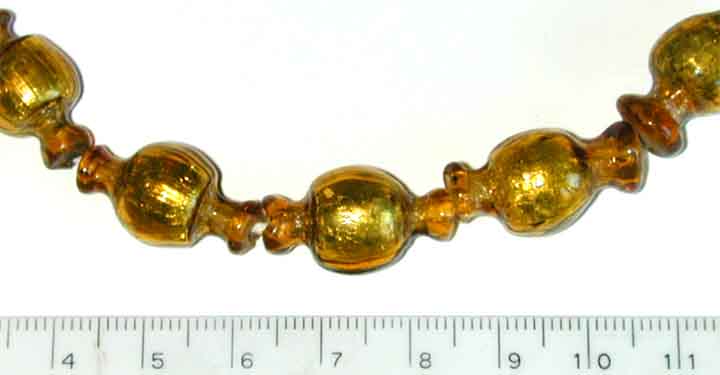| More Repros | |||||
| Re: Beads for the Fake Antiquities Market -- Beadman | Post Reply | Edit | Forum | Where am I? | |
04/28/2009, 15:11:40
Consequently, because gold-glass beads have come into the marketplace from Indonesia, and because the technique has to be accomplished to make good copies of jatim, it is not surprising that beadmakers would make reasonably decent copies of gold-glass beads too. This strand consists of beads that have additional collars on their ends—this requiring that each bead have FOUR constrictions: two to separate the bead from the parent cane, and two to form the collars just inside these separating constrictions.
The next photo shows a strand of beads that really impressed me, that I was gratified to be able to purchase from Mr. Ferry. These are also hot-pinched beads, made from striped-&-twisted canes, copying ancient jatim. Thinking about their structure and appearance, we can easily compare them to pelangi beads—though these are smaller and (usually) not combed. But, perhaps the most impressive thing about them is that the glass has been artificially decayed/distressed, most likely by immersion into an acid bath. This has left the beads delicate and prone to breakage—much like actual ancient glass beads.
JDA.

